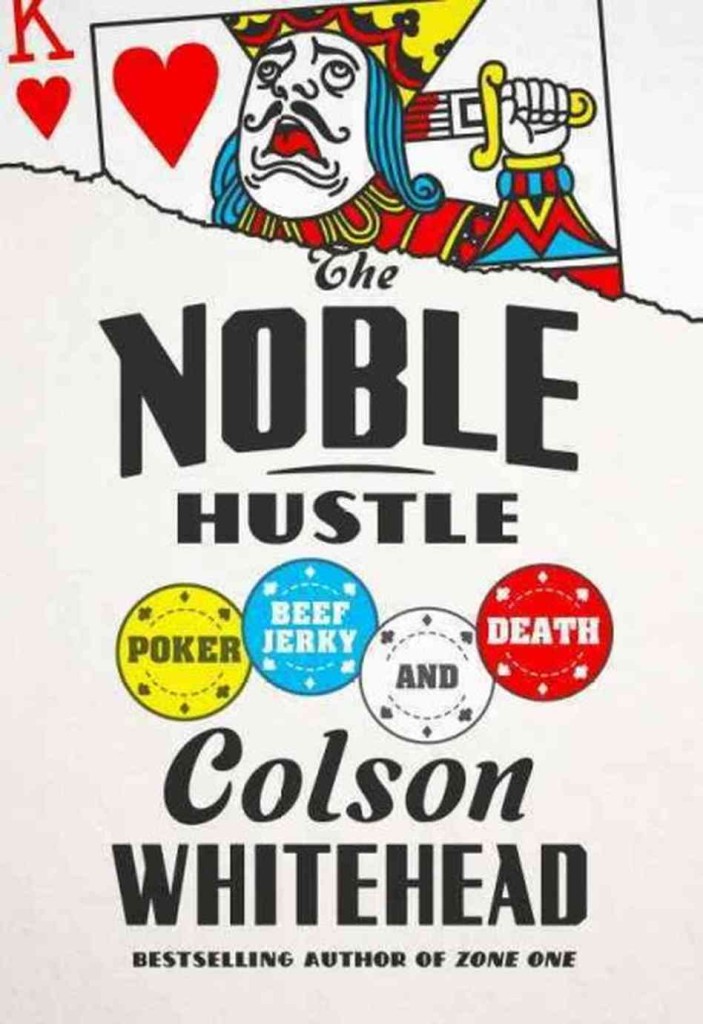
A couple years ago, I was hired by the magazine Grantland to write about sports, but I hate sports. They heard I like poker, and then they offered to pay my $10,000 buy-in and have me play in the World Series. Of course, I couldn’t say no. So here’s a list of some of my favorite poker – and poker-related – artifacts.
“The Biggest Game in Town”
One of the first books about the World Series of Poker was A. Alvarez’s The Biggest Game in Town. The New Yorker sent him to cover the 1981 World Series of Poker. It’s a very colorful account of early ’80s Vegas, before it became very family-friendly and corporate; it was still very grungy.
One of the things that I related to is that he’s an Englishman and a poet — and so he’s very much an outsider in gaudy Vegas culture. I can’t help but chuckle at his descriptions of his interactions with these crusty old legendary cowboys of poker, you know — these very American types. He brings a great welcoming voice and elegant eye to the proceedings. Before the TV cameras, before the shots which allow you to see poker players’ down cards, it’s people like Alvarez who brought the Vegas experience to the home player.
“Casino Royale”
There are a lot of great poker movies and gambling movies: “The Hustler,” with Paul Newman; “Rounders,” in 1998, was the first big movie about Texas Hold ‘Em and introduced it to a lot of teenagers who later came to dominate the game; but I keep thinking about “Casino Royale” — the reboot of the James Bond movies. Instead of baccarat, in the classic James Bond style, there’s a big Hold ‘Em tournament.
There’s one scene where he’s been poisoned by a international supervillain, has to run out because he’s having a heart attack, and brings himself back to life by jump-starting his heart with a defibrillator. (Most cars, one day, will hopefully be equipped with defibrillators, in case this happens to you.) He comes back from the brink sweaty, disheveled… and returns to the game.
In between hands at the World Series of Poker, I was freaking out, trying not to have my hand shake, and trying to keep track of all the poker lore I had crammed in six weeks. It wasn’t quite as dramatic as having a heart attack, but I certainly was sweating a lot. Having James Bond, this very cool customer, also have a breakdown during very key poker hands gave me inspiration.
“Zona”
You know, we’re talking about poker here, so I’m gonna bluff a little, and use dealer’s choice to put in one of my inspirations, “Zona” by Geoff Dyer.
It’s not about poker. It’s about a movie that a person loves. Geoff Dyer, he writes novels, books of essays. In this book, he’s writing about the film “Stalker” by Tarkovsky, a very slow science fiction movie about a forbidden zone where strange things happen, and people are always organizing expeditions into this wasteland.

He’s very funny, and so humor becomes a way of translating this very… “lugubrious” is a word for it… “meditative” is another… film, for folks who haven’t seen it, and perhaps aren’t acquainted with late 1970s Russian science fiction cinema.
In trying to figure out why I love poker, I was engaged in the same sort of dilemma. Poker is, from the outside — and actually sometimes from the inside — quite boring. Even the most aggressive players are only playing four out of every ten hands. You’re constantly biding your time, waiting for a chance to strike. So, Geoff Dyer’s book captures the high-wire act that any writer’s engaged in when they’re taking a subculture, and trying to bring it to an audience that’s not familiar with it.
It’s a risk, and… a gamble.


